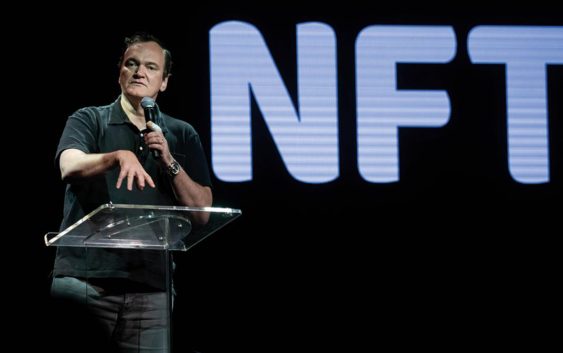
There are various intellectual property issues concerning cryptoassets including non-fungible tokens (NFTs).
Many organisations are developing cryptoassets and wish to protect their IP.
Copyright can apply to cryptoassets such as software used in fintech. Computer programs may be classed as literary works under sections 1 and 3(1) of the Copyright, Designs and Patents Act 1988 (CDPA). However, caution is required when combining original software code with open source material. Licensing restrictions on open source material may inhibit the use of any original code.
The use of artificial intelligence raises the question of whether copyright can be created without human input. Section 9(3) of the CDPA states: ‘The author shall be taken to be the person by whom the arrangements necessary for the creation of the work are undertaken.’ This suggests some human intervention is required for copyright purposes. Other legislation suggests that AI could be the author of literary material, for example the EU Database Directive 96/9/EC refers to the author of a database being a natural person unless the legislation of a member state so permits the legal person designated as the right holder. The legal person could be a form of AI. The 2019 Chinese court decision of Shenzchen Tencent v Yinxun raised the possibility that AI could be an integrated part of the process in the creation of copyrighted material in collaboration with human intervention.
Court decisions such as Symbian Ltd v Comptroller General of Patents, Designs and Trademarks [2008] EWCA Civ 1066 illustrate that computer programs are capable of being registered as patents. However, the notion of an AI system being named as the inventor has been rejected – Stephen Thaler v Comptroller General of Patents, Trademarks and Designs [2021] EWCA Civ 1374 (the Dabus Case). Last year the Intellectual Property Office called for views about AI and patents, and the findings are eagerly awaited.
Aside from patents there is also the use of trade secrets as a means of securing material particularly on a private blockchain system. The New Zealand case of Ruscoe v Cryptopia Ltd (in Liquidation) [2020] NZHC 728 held that cryptocurrencies were a form of property and as a consequence capable of forming the subject matter of a trust with the attendant duties of confidentiality to protect code and algorithms.
An active application of IP concerns NFTs. An NFT is a unique and non-interchangeable unit of data stored on a digital ledger using blockchain technology to establish proof of ownership. NFTs apply to unique assets and cannot be exchanged for an identical version of itself; there is one original Mona Lisa painting but there are umpteen pound coins (fungible).
The creative industries such as art, music and fashion have been prevalent in adopting NFTs. In October 2020, Christie’s became the first traditional auction house to offer an NFT-backed artwork, titled Block 21. Selfridges is planning to sell NFTs and digital fashion in its Oxford Street store in London. Malta-based Socios has built partnerships with many leading sports clubs. Socios issues NFTs as social tokens enabling, for instance, football fans to vote on decisions about their club or exclusive access to certain memorabilia.
NFTs use ERC 721 code standard, allowing greater flexibility to include smart contracts for licensing, thus allowing nuanced forms of trading.
Arguably, NFTs do not concern copyright and other IP rights. Essentially, an NFT is a unique combination of code, namely the token ID (akin to a car registration number) and the contract address on the blockchain. The ownership of the IP, such as for a piece of music or art, is not the relevant factor which is instead the ownership of the unique metadata or code.
Many buyers of NFTs believe that they are buying the underlying IP, which is usually not the case. They can acquire the underlying IP if buying from the IP owner and the seller assigns rights.
In most cases buyers are acquiring the unique metadata and not underlying IP. Others may be able to copy the work with the original author retaining copyright, but only the NFT holder owns the original coding.
Disputes are beginning to develop between the IP owners and those creating or owning NFTs. For example, Miramax is suing Quentin Tarantino (pictured above) for trade mark and copyright infringement plus breach of contract for selling NFTs derived from the original scripts of Pulp Fiction. Tarantino’s lawyers say the case is ill-conceived and seeks to prevent him exercising his clear contractual rights.
Similarly, Hermes is suing designer Mason Rothschild for selling ‘MetaBirkin’- branded NFTs using the name and look for their iconic handbag. Rothschild argues his NFT is artwork referring to Andy Warhol’s Campbell Soups images which were deemed not to infringe copyright or trade mark.
Arguably, the NFT is the original code and its reference to a piece of copyrighted material is incidental. Alternatively, it is an exploitation of someone’s IP including passing off. Using disclaimers can help mitigate matters by stating NFT was not with the copyright owner and the NFT purchaser is not acquiring IP rights.
NFTs can help protect IP and prevent counterfeiting; for instance Nike produces tangible products allied to an NFT verifying the goods. Without the NFT you cannot verify a product’s genuineness.
IP and cryptoassets including NFTs is a dynamic area of the law as the market develops nationally and internationally.


